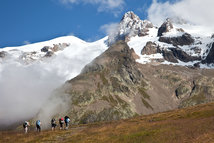Natural and rural areas
Overview
- Introduction
- Areas under pressure or experiencing population loss
- Natural areas for conservation
- A disruption of the cross-border link
- A great need for recognition
- EU instruments for 2014-2020
Introduction
Although cross-border cooperation first developed in urban settings, it increasingly concerns rural and natural areas, which account for the majority of cross-border territories by number on European borders as a whole. These vast spaces, coast, mountain or plain, often sparsely populated, are subject to specific constraints related to their more limited to financial, technical and human resources compared with urban areas.
Whether the border cuts across an existing cross-border living area or physical or historical constraints make it more of a barrier, cross-border cooperation is a necessary means of local development for these spaces. Such cooperation enables them to organise their territory in a more coherent manner, looking for complementarities or pooling assets (e.g. facilities, public services) and also to be more easily identifiable within the European Union.
Structured as rural districts (such as the “Pôles d’excellence rurale” or “Pôles d’équilibre territoriaux et ruraux” in France), as parks, or structured according to other modes of organisation, benefiting from targeted national and European subsidies (Leader, Interreg), these cross-border rural spaces should form networks in order to identify their needs, exchange experiences and to map out possible ways forward for improving their cooperation.
These spaces are characterised not only by their natural links across borders; but also by the diversity of the topics of cooperation that link them. At the cross-border scale, protected natural areas (national parks, regional nature parks, nature reserves, etc.) represent breathing spaces in a Europe where urbanisation and its consequences on the environment are more visible every day.
They are the example of a growing consideration for sustainable development (preservation of natural resources, landscapes and traditional skills associated with these areas). They are also an important element in a new type of rural economic development thanks to the enhancement of local production sectors, promotion of tourism, and joint spatial planning.
Photo copyright: Andrea Alborno


